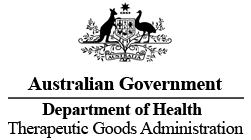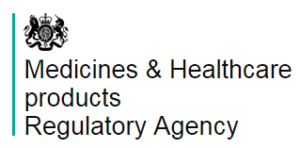WuXi Biologics
Offering End-to-End Solutions
监管机构资讯
WuXi Biologics Regulatory Updates
Quarter 1 – 2021
WuXi Biologics’ Regulatory Affairs team is honored to provide you with a summary of what we deem as the relevant (i.e., product development and CMC-related) regulatory updates organized by agency and by topic. We have compiled these updates to support your efforts to stay current in the ever-changing regulatory environment for biological therapeutics and vaccines.
Purpose & Disclaimer: The intent of this update is to provide the global regulatory agencies’ updates and new or revised documents during the period stated here. The items listed should neither be considered comprehensive nor exhaustive of all updates from the regulatory agencies but as such, the list contains items that the WuXi Biologics’ Regulatory Affairs team deems relevant to our potential or existing clients and partners developing biological therapeutics and vaccines. Therefore, this update is for information purposes only and is provided “as is” without any warranty, expressed or implied, as to the completeness or accuracy of the contents or its use or fitness for a particular purpose. Without limiting the generality of the foregoing, the document and information contained therein should not be construed as regulatory advice or representing, speaking or acting for any regulatory agency. The information is provided to support your efforts to remain informed and should not be used as a substitute for your own regulatory due diligence or actions.
Quick Links to Agency Sections: U.S. Food & Drug Administration (FDA) | European Medicines Agency (EMA) | Health Canada | World Health Organization (WHO) | Agency Collaboration | Pharmaceuticals and Medical Devices Agency (PMDA) | Australian Department of Health Therapeutic Goods Administration (TGA) | MHRA – Medicines and Healthcare Products Regulatory Agency | Pharmaceutical Inspection Co-operation Scheme(PIC/S) | National Medical Products Administration (NMPA)
U.S.FDA
CDER Guidance Agenda New & Revised Draft Guidance Documents Planned for Publication in Calendar Year 2021 (January 2021)
The categories of the guidances planned for publication by CDER in calendar year 2021 include biosimilars, biostatistics, clinical, drug safety, electronic submissions, generics, labeling, CMC, and procedures amongst others. A selection of CMC-related guidances are listed below:
- ICH Q12, General Considerations for FDA Implementation
- Inspection of Injectable Products for Visible Particulates
- Quality Considerations for Topical Ophthalmic Drug Products
- Quality and Stability Testing of Drug Substances and Drug Products for NDAs, ANDAs, and BLAs and Associated Labeling Statements for Drug Products
- Benefit-Risk Considerations for Product Quality Assessments
- Responding to cGMP Observations on Form FDA 483
COVID-19: Potency Assay Considerations for Monoclonal Antibodies and Other Therapeutic Proteins Targeting SARS-CoV-2 Infectivity (January 2021)
The guidance describes methods that applicants should use to ensure the potency of mAbs and other therapeutic proteins proposed for use as anti-infective agents for COVID-19, which applies only to mAbs and other therapeutic proteins designed to bind to viral receptors on host cells, inhibit viral entry, and/or elicit Fc-mediated effector function. This guidance describes how potency assay methods required for release and stability testing can be shown to assess comprehensively known or potential mechanism(s) of action (MOA) of the product. Such methods should also be sufficiently sensitive to demonstrate lot-to-lot consistency. This policy is intended to remain in effect only for the duration of the public health emergency related to COVID-19 declared by the Secretary of HHS. A summary of some key elements in the guidance are as follows:
- Key considerations for evaluating the appropriateness of a potency assay for a specific mAb or other therapeutic proteins for treating or preventing COVID-19 includes:
- product characteristics
- manufacturing processes
- the stage of development in which the assay will be used
- the robustness of the sponsor’s quality system
- the strength of the sponsor’s risk-based quality assessment
- the totality of the information provided by the applicant
- A binding assay is generally sufficient to serve as a potency assay at the IND stage of development, however, sponsors should subsequently develop methods that more comprehensively monitor the proposed MOA of the products. If the mAb or therapeutic protein has multiple MOAs (e.g., neutralization and Fc-effector function), multiple potency assays should be used. These methods should be incorporated into drug substance and drug product release testing and stability protocols, and should be described, justified, qualified, and validated to support a BLA.
- In addition to release and stability methods, additional methods that demonstrate the biological function(s) of the product may be needed for characterization and comparability studies.
- Possible analytical methods include binding assays, viral neutralization assays, and Fc-effector function assays. Considerations for application of these assays are described in the guidance.
This guidance provides manufacturers of licensed and investigational Cellular Therapy and Gene Therapy (CGT) products with risk-based recommendations regarding donor assessment, cellular or tissue source material assessment, manufacturing, and material testing to minimize potential transmission of SARS-CoV-2. This guidance is intended to supplement the recommendations to manufacturers provided in FDA’s “Good Manufacturing Practice Considerations for Responding to COVID-19 Infection in Employees in Drug and Biological Products Manufacturing” issued in June 2020. The recommendations in this guidance are intended to remain in effect only for the duration of the public health emergency related to COVID-19 declared by the Secretary of HHS.
This guidance provides recommendations to sponsors on the development of Monoclonal Antibodies (mAbs) targeting SARS-CoV-2 regarding CMC, pharmacology, toxicology, virology, and clinical, including addressing the impact of emerging variants. This policy is intended to remain in effect only for the duration of the public health emergency related to COVID-19 declared by the Secretary of Health and Human Services (HHS). A summary of some key elements of the guidance are as follows:
- Sponsors of mAbs targeting SARS-CoV-2 should consider the guiding principles FDA recommended to streamline and expedite the review process.
- Specific examples are introduced in this guidance to give recommendations on the approaches to support the use of mAbs targeting SARS-CoV-2 under an Emergency Use Authorization (EUA), which includes considerations of leveraging experience obtained from other mAbs in development and already licensed mAbs, timely interaction with FDA, and certain approaches for limited early phase development to enable rapid introduction of the product into clinical trials, etc.
Guidance Agenda: Guidance Documents CBER is Planning to Publish During Calendar Year 2021 (February 2021)
The categories of the guidance planned for publication by CBER in calendar year 2021 include blood and blood components, tissues and advanced therapies, amongst others. A selection of Cellular Therapy and Gene Therapy (CGT) products related guidance are listed below:
- Manufacturing Considerations for Licensed and Investigational Cellular and Gene Therapy Products During COVID-19 Public Health Emergency (Issued: January 2021)
- Interpreting Sameness of Gene Therapy Products Under the Orphan Drug Regulations
- Regulation of Human Cells, Tissues, and Cellular and Tissue-Based Products (HCT/Ps) – Small Entity Compliance Guide
- Chemistry, Manufacturing, and Controls Changes to an Approved Application: Certain Biological Products
Emergency Use Authorization for Vaccines to Prevent COVID-19 (February 2021)
This guidance describes FDA’s criteria and considerations, as well as the key recommendations to sponsors regarding administrative and regulatory information, CMC, non-clinical, and clinical information required for issuance of an EUA under Section 564 of the FD&C Act for an investigational vaccine to prevent COVID-19. It also addresses the process for Vaccines and Related Biological Products Advisory Committee (VRBPAC) meeting preparation and submission to facilitate FDA’s complete and timely review, and it highlights the considerations for evaluation of vaccines to address emerging SARS-COV-2 variants.
This guidance is intended to remain in effect only for the duration of the public health emergency related to COVID-19 declared by the Secretary of HHS, which can be read in conjunction with the FDA guidance “Development and Licensure of Vaccines to Prevent COVID-19”.
COVID-19 Container Closure System and Component Changes: Glass Vials and Stoppers Guidance for Industry (March 2021)
This guidance is issued to address the COVID-19 public health emergency of Container Closure System (CCS) supply constraint and is being implemented immediately. It provides recommendations regarding the appropriate reporting category and implementation of some common post-approval changes to CCS components consisting of glass vials and stoppers for approved sterile drug products, including biological products, administered parenterally. This guidance does not apply to CCS types other than glass vials and stoppers. Other elements include:
- Appendix A illustrates the recommendations for reporting category and submission content related to common post-approval CMC changes to CCS components for finished drug and biological products.
- Risk-based approaches including supplement with a lower reporting category or comparability protocols are recommended by the FDA to facilitate the CCS-related changes.
The Field Management Directive (FMD) provides criteria and instructions to investigators when conducting an investigation requested by a Center, of a facility engaged in the manufacturing, packaging, labeling or testing of certain medical products that may be granted an EUA. This FMD applies to investigations related to issuance or potential issuance of an EUA for medical products, which can take place prior to or after the submission of an EUA request.
This FMD is not intended to replace or supersede any existing FDA regulatory authority or oversight related to inspections, including but not limited to: pre-operational reviews, NDA and ANDA pre-approval or BLA pre-license or pre-approval inspections, or an inspection of a facility engaged in the manufacturing, packaging, labeling, or testing of a medical product(s) that may be subject to an EUA.
Regulatory Submission and Procedure News Updates
- Innovative Science and Technology Approaches for New Drugs (ISTAND) Pilot Program (Updated: February 2021)
- CBER 2021-2025 Strategic Plan (March 2021)
Vaccines, Gene Therapy, and Advanced Therapy Medicinal Products News Updates
- SOPP 8119: Use of Email for Regulatory Communications (January 2021)
- SOPP 8401: Administrative Processing of Original Biologics License Applications (BLA) and New Drug Applications (NDA) (March 2021)
- SOPP 8401.2: Administrative Processing of BLA and NDA Supplements (March 2021)
Coronavirus Disease (COVID-19) Related News
- Coronavirus Treatment Acceleration Program (CTAP) (Updated: January 2021)
- Manufacturing, Supply Chain, and Drug and Biological Product Inspections During COVID-19 Public Health Emergency Questions and Answers (Updated: February 2021)
- Authorizations of Emergency Use of Certain Drug and Biological Products During the COVID-19 Pandemic; Availability (February 2021)
- Availability of Guidance Documents Related to Coronavirus Disease 2019 (February 2021)
- Coronavirus (COVID-19) Update: February 26, 2021 (February 2021)
- FDA Authorizes Revisions to Fact Sheets to Address SARS-CoV-2 Variants for Monoclonal Antibody Products under Emergency Use Authorization (March 2021)
- FDA’s Ongoing Use of Inspectional Tools for Ensuring Access to Safe, Quality Food and Medical Products During the COVID-19 Pandemic (March 2021)
Other News Updates
- New Drug Therapy Approvals 2020 (January 2021)
- Office of Pharmaceutical Quality 2020 Annual Report (February 2021)
- Oncology Center of Excellence 2020 Annual Report (February 2021)
- Office of New Drugs (OND) | Annual Reports (March 2021)
EU/EMA
Parallel Application for EU-M4all (Article 58) Opinion and Centralized Marketing Authorization Procedure (January 2021)
This guidance offers the possibility for EMA to evaluate the centralized marketing and EU Medicines for all (EU-M4all) applications in parallel, to obtain a centralized marketing authorization and an EU-M4all scientific opinion about the same time, as well as to reduce duplicate assessment efforts. The guidance summarizes the general criteria for a parallel assessment in terms of product eligibility, filing procedures, communications with the agency, dossiers preparation, timelines, post-opinion/post-authorization requirements and application fees, amongst other considerations. Of note:.
- Article 58 of Regulation (EC) No 726/2004 provides that the EMA may give a scientific opinion for medicines intended to be used outside the EU, primarily for low- and middle-income countries, which is called EU Medicines for all or EU-M4all.
Reflection Paper on the Regulatory Requirements for Vaccines Intended to Provide Protection Against Variant Strain(s) of SARS-CoV-2 (February 2021)
This reflection paper outlines the quality, non-clinical, and clinical data required to support approval of a variant vaccine, whether monovalent or multivalent. The requirements apply only when the parent vaccine has been granted marketing authorization in the EU, and the manufacturing process and controls and the facilities for vaccine production of the variant vaccine, are the same or very similar to those for the parent vaccine, except for the SARS-CoV-2 antigen(s) to be presented to the human immune system following vaccination.
The requirements of quality documents for authorization of a variant vaccine will largely depend on the technology underlying the parent vaccine construct (e.g. mRNA vaccine, viral vector, purified protein produced by recombinant DNA technology, inactivated viral vaccine). Specific points to be addressed in the dossiers content of Module 3 is listed in this guidance.
Pilot Project ‘Market Launch of Centrally Authorized Medicinal Products’ (March 2021)
A centralized marketing authorization procedure allows MAHs to market medicinal products and make them available in all EU member states. However, in practice, there are still different levels of access to medicines in the EU when a newly centrally authorized medicinal product (CAP) is made available. In order to increase availability of CAPs, the Commission has committed to initiate this pilot project with EMA and EU countries. The objective of this project is to improve regulators’ knowledge of the planned marketing of CAPs and the reasons behind delayed market launch.
This project will be initiated by engaging with MAHs of orphan medicines and oncology medicines through voluntary sharing of their marketing intentions of CAPs in the pre-authorization phase on a confidential basis. The timeline of the pilot project is from March 25th, 2021 to August 2022. The Q&A document “Pilot Project ‘Market Launch Intentions of Centrally Authorized Products’ – Practical Questions and Answers” is issued by the EMA to complement this pilot plan.
Drug Development and Quality Guideline News Updates
- European Pharmacopoeia Supplement 10.5 Now Available (January 2021)
- Pharmeuropa 33.1 Just Released: Don’t Miss this Opportunity to Provide Your Comments (January 2021)
- Scientific Guideline: Draft Toolbox Guidance on Scientific Elements and Regulatory Tools to Support Quality Data Packages for PRIME Marketing Authorization Applications (February 2021)
- Questions and Answers on the Pilot Project ‘OPEN’ (February 2021)
- Ph. Eur. Supplement 10.6: Updated Dosage Form Monographs and General Chapters (February 2021)
Regulatory Submission and Procedure News Updates
- Dossier Requirements for Centrally Authorized Products (CAPs) (January 2021)
- Brexit: End of Mutual Recognition of Official Control Authority Batch Release between the EU/EEA and the UK (January 2021)
- Changing the Name or Address of a Sponsor (Updated: February 2021)
- Draft – Questions and Answers Document – Regulation (EU) 536/2014 – Version 3 (February 2021)
- European Medicines Agency Practical Guidance on the Application Form for Centralized Type IA and IB Variations (February 2021)
- HMPC Work Plan 2021 (March 2021)
- Guidance on Parallel Consultation (Updated: March 2021)
- Committee for Medicinal Products for Human Use (CHMP): Work Plan 2021 (March 2021)
- ICH M4 Common Technical Document (CTD) for the Registration of Pharmaceuticals for Human Use – Organization of CTD (Updated: March 2021)
- European Medicines Agency Pre-Authorization Procedural Advice for Users of the Centralized Procedure (Updated: March 2021)
Coronavirus Disease (COVID-19) Related News
-
- EMA Recommends COVID-19 Vaccine Moderna for Authorization in the EU (January 2021)
- EMA Recommends COVID-19 Vaccine AstraZeneca for Authorization in the EU (January 2021)
- EMA COVID-19 Assessments ‘OPEN’ to Non-EU Regulators (February 2021)
- Questions and Answers on the Pilot Project ‘OPEN’ (February 2021)
- EMA Preparing Guidance to Tackle COVID-19 Variants (February 2021)
- International Cooperation to Align Approaches for Regulation of COVID-19 Vaccines and Medicines (February 2021)
- COVID-19: Latest Updates (Updated: March 2021)
- Labelling Flexibilities for COVID-19 Therapeutics (March 2021)
Other News Updates
- The Impact of Biosimilar Competition in Europe – Annual Report Conducted by On Behalf of the European Commission (January 2021)
- Newsletter: Human Medicines Highlights – January 2021 (January 2021)
- Human Medicines: Highlights of 2020 (January 2021)
- Newsletter: Human Medicines Highlights – February 2021 (February 2021)
- Frequently Asked Questions (Updated: February 2021)
- Audit Checklist – Interpretation Guide (February 2021)
- Multilateral Coalitions and Initiatives (Updated: February 2021)
- Report – Workshop on Support for Orphan Medicines Development (February 2021)
- Newsletter: Human Medicines Highlights – March 2021 (March 2021)
Health Canada

Regulatory Submission and Procedure News Updates
Notice: Publication of the Guidance Document: Certificates of Supplementary Protection (January 2021)
Filing Submissions Electronically (January 2021)
WHO

TRS 1033 – 55th Report of the WHO Expert Committee on Specifications for Pharmaceutical Preparations (March 2021)
This report summarizes the key decisions and recommendations made by the WHO Expert Committee on Specifications for Pharmaceutical Preparations (ECSPP) at its 55th meeting in 2020. The report also updates ECSPP’s progress in standard setting and guideline draft evaluations for global medicine quality control and quality assurance purposes. Some key guidelines adopted include:
- Points to Consider when Including Health-based Exposure Limits in Cleaning Validation (TRS 1033 – 55th Report Annex 2)
- Good Manufacturing Practices: Water for Pharmaceutical Use (TRS 1033 – 55th Report Annex 3)
- Guideline on Data Integrity (TRS 1033 – 55th Report Annex 4)
- WHO Good Manufacturing Practices for Sterile Pharmaceutical Products is currently under revision to achieve a harmonized text with the EU/EMA and PIC/S, which is expected to be adopted in 2021
Agency Collaboration
Points to Consider for Strain Changes in Authorized COVID-19 Vaccines in an Ongoing SARS-COV-2 Pandemic (March 2021)
This Points to Consider (PTC) document was written by a coalition of regulatory authorities of Australia, Canada, Singapore, Switzerland, and the United Kingdom (also known as the Access Consortium), which lays out a regulatory approach for updating authorized coronavirus vaccines against SARS-CoV-2 variants. It points out that a regulatory approach, like for seasonal updates for influenza vaccines, can be taken for the rapidly evolving pandemic.
This PTC document describes the general regulatory concepts for influenza virus vaccines and outlines the considerations on quality, non-clinical, clinical, and regulatory aspects for adapting authorized COVID-19 vaccines for SARS-CoV-2 mutations in an ongoing pandemic. From a pharmaceutical quality perspective, details of the virus sequence, its history and any updates to the already established manufacturing process should be provided and supported by appropriate batch analyses and stability data
PMDA
![]()
Regulatory Submission and Procedure News Updates
Notifications and Administrative Notices: Notification on Procedure for Remote Inspection (Nov. 16, 2020) and Administrative Notice on Clinical Evaluation of Drugs in Pediatric Patients (Jun. 30, 2020) (January 2021)
Coronavirus Disease (COVID-19) Related News
ICMRA Statement for Healthcare Professionals: How COVID-19 Vaccines Will Be Regulated for Safety and Effectiveness (January 2021)
TGA

Regulatory Submission and Procedure News Updates
- Provisional Registration Extension and Transition to Full Registration (Updated: January 2021)
- Medicine Labels: Guidance on TGO 91 and TGO 92 (March 2021)
Vaccines, Gene Therapy, and Advanced Therapy Medicinal Products News Updates
- Advisory Committee on Vaccines (ACV) (January 2021)
Coronavirus Disease (COVID-19) Related News
- TGA One of Only Five Non-European Regulators Invited to Participate on European Committees on COVID-19 Vaccines and Therapeutics (February 2021)
- TGA Provisionally Approves AstraZeneca’s COVID-19 Vaccine (February 2021)
- TGA Approves CSL – Seqirus to Manufacture AstraZeneca COVID-19 Vaccine in Australia (March 2021)
MHRA

Drug Development and Quality Guideline News Updates
- Guidance on Responding to a GMP/GDP Post Inspection Letter (January 2021)
- New Guidance and Information for Industry from the MHRA (Updated: February 2021)
Regulatory Submission and Procedure News Updates
- Unfettered Access Procedure for Marketing Authorizations Approved in Northern Ireland (January 2021)
- European Commission (EC) Decision Reliance Procedure (January 2021)
- Decentralized and Mutual Recognition Reliance Procedure for Marketing Authorizations (January 2021)
- Register to Make Submissions to the MHRA (January 2021)
- Medicines: Apply for A Parallel Import License (January 2021)
- Guidance on Handling of Decentralized and Mutual Recognition Procedures Which Are Approved or Pending (Updated: January 2021)
- Medicines: Licensing Time-based Performance Measures (Updated: March 2021)
- Guidance for Industry on MHRA’s Expectations for Return to UK On-site Inspections (March 2021)
Coronavirus Disease (COVID-19) Related News
- Modified COVID-19 Vaccines for Variants to Be Fast-tracked, Says MHRA and Other Regulators (March 2021)
- MHRA Guidance on Coronavirus (COVID-19) (March 2021)
Pharmaceutical Inspection Co-operation Scheme
(PIC/S)








Drug Development and Quality Guideline News Updates
Regulatory Submission and Procedure News Updates
- PIC/S Work Plan for 2021 (March 2021)
National Medical Products Administration (NMPA)
![]()
The NMPA guidance documents and updates are written in Chinese, therefore, we have provided more detailed summaries in English for your benefit. The WuXi Biologics Regulatory Affairs team may be available for consultation should your organization be actively pursuing drug development or entering clinical trials in China.
Interpretation of Revisions to Chapter 10 of Part Two of the “Patent Review Guideline” (January 2021)
The revised “Patent Review Guideline” came into effect on January 15, 2021. The main revisions related to biological products are:
- Revision to the claims for monoclonal antibodies (Section 9.3.1.7, Chapter 10, Part Two)
- The claims for monoclonal antibodies can be either defined by structural features or by the hybridoma that produces it, and examples are given to provide more specific and clear explanations.
- Revisions to the creativeness of inventions in biotechnology (Section 9.4.2, Chapter 10, Part Two)
- Added a summary of the general principles for determining creativeness of inventions in the biotechnology field.
- Improved the criteria for determining creativeness under specific scenarios in terms of “gene”, “recombinant vector”, “transformant” and “monoclonal antibody”.
- Added criteria for determining creativeness regarding “polypeptide or protein” under specific situations.
Notice from the NMPA: Regulation of Post-marketing Changes to Drugs, Trial (January 2021)
The Regulation of Post-marketing Changes to Drugs, Trial (hereinafter referred to as “the Regulation”) came into effect on January 13, 2021. The Regulation lays out the common changes to the manufacturing process (i.e., Market Authorization Holder (MAH) change, manufacturing site change, etc.) and outlines the general procedures for the classification, adjustment and management of the changes. Regulations for companies under different circumstances are classified, providing specific guidance for the MAHs to manage changes to manufacturing site and scope. The application procedures for changes are also specified.
The Regulation emphasizes that the MAHs hold the main responsibility for the management of the post-marketing changes to drugs and should establish a change control system. MAHs should establish internally the principles of change categorization, change list, change procedure and risk management standard based on the relevant NMPA and ICH guidelines.
The MAHs must communicate with the provincial regulatory authorities before lowering the change category to one that is less significant than compared with its change list or that is in the technical guidance. The MAHs may also submit a communication application to the local regulatory authorities if unable to determine the change category.
NMPA Re-solicits Opinions on the “Rules for Production and Distribution of Vaccines” (Draft: March 2021)
The NMPA revised the first draft after evaluating the comments collected since May 2020 and is calling for public opinions on the second draft by March 11, 2021.
The revised draft refined the procedures of application, acceptance, review, and inspection for entrusted manufacturing of vaccines. Key points are summarized as follows:
- The rule emphasizes that the drug marketing authorization holder (MAH) should obtain a vaccine Drug Manufacturing License, and if entrusting manufacturing (if entrusted manufacturing is allowed) to a qualified manufacturing enterprise (e.g., Contract Manufacturing Organization [CMO]), the MAH must ensure that the qualified manufacturing enterprise also obtains or maintains a vaccine Drug Manufacturing License.
- The rule clarifies that for all types of vaccines, either the entire or part of the manufacturing process can be entrusted, indicating the feasibility of segmented production of vaccine drug substance and drug product at different locations.
- The rule defines restrictions on the entrusted manufacturing of multivalent vaccines. “Both the MAH and the CMO should be legally authorized pharmaceutical manufacturers and one of them should own more than 50% of the other party, or both the MAH and the CMO are subsidiary companies of a pharmaceutical company which holds more than 50% of the MAH and the CMO”.
Per current regulations, the MAH holds the main responsibility of ensuring the safety, efficacy and quality of its vaccine products. So far, there are very few cases of vaccine contract manufacturing in China, and no CMO has obtained vaccine Drug Manufacturing License yet. Continuous monitoring of the updates of relevant regulations is needed.
COVID-19 Vaccines in China
By the first quarter of 2021, the National Medical Products Administration (NMPA) has approved a total of five vaccines for the prevention of COVID-19, four are “conditional approval for marketing authorization” and one is “for emergency use” [1]. Information and comparison of the five vaccines are summarized as follows:
| Approval Info | Company | Vaccine Type | Characteristics |
| December 2020 Conditional Approval |
Beijing Institute of Biological Products Co., Ltd (Sinopharm) | Inactivated vaccine (Produced from Vero Cells ) |
First approved COVID-19 vaccine in China; Produced through virus culture, harvest, inactivation and purification |
| February 2021 Conditional Approval |
Sinovac Research and Development Co., Ltd | Inactivated vaccine (Produced from Vero Cells) |
Similar technical pathway as the vaccines produced by Beijing Institute of Biological Products |
| February 2021 Conditional Approval |
Wuhan Institute of Biological Products Co., Ltd (Sinopharm) | Inactivated vaccine (Vero cell) |
|
| February 2021 Conditional Approval |
CanSino Biologics Inc. | Recombinant adenovirus vector vaccine | First single-dose COVID-19 vaccine in China; Using adenovirus vector to carry a gene encoding antigen of COVID-19 virus |
| March 2021 Emergency Use |
Anhui Zhifei Longcom Biopharmaceutical Co., Ltd | Recombinant protein vaccine | First COVID-19 recombinant protein vaccine in the world; Produced through gene engineering techniques to express the protein in CHO cells |
Note [1]: According to the “Vaccine Administration Law,” “Emergency use” can only be applied to vaccines when there is a critical public health emergency or other emergencies that seriously threaten the public health, the national health authorities will, based on the needs to prevent and control infectious diseases, propose the emergency use of vaccines. The vaccines could be used within a certain range and within a certain period after approval of the proposal by NMPA.
Reference
- NMPA Conditional Approved the Marketing Application of Inactived Covid-19 Vaccine (Vero Cell) by Beijing Institute of Biological Products Co., Ltd (Sinopharm) (December 2020)
- NMPA Conditional Approved the marketing application of Inactived Covid-19 Vaccine (Vero Cell) by Sinovac Research and Development Co., Ltd (February 2021)
- NMPA Conditional Approved the Marketing Application of Inactived Covid-19 Vaccine (Vero Cell) by Wuhan Institute of Biological Products Co., Ltd (Sinopharm) (February 2021)
- NMPA Conditional Approved the Marketing Application of Recombinant Covid-19 Vaccine (Type 5 Adenovirus Vector) by CanSino Biologics Inc.5 (February 2021)
- Transcript of the press conference of the Joint Prevention and Control Mechanism of the State Council on March 21, 2021 (March 2021)
Q&A about On-Site Inspection for Drug Registration
The NMPA Center for Food and Drug Inspection (CFDI) summarized a list of questions regarding on-site inspections.
Q 1: Process validation is not finished when applying for the on-site inspection for drug registration. Can the sponsor submit a statement to commit to finishing the process validation within a certain time limit and before the inspection?
A: No. Commercial scale process validation should be completed before submitting the inspection application form.
Q 2: Does the ‘inspection history in the last three years’ mentioned in the Drug Registration On-site Inspection Information Summary Form only apply to the MAHs?
A: It refers to the site that is being inspected, which could either be the MAH or the research/manufacturing site, depending on the focus of the inspection.
Q 3: Can the sponsor apply for postponing inspection?
A: Yes. The sponsor can apply to postpone the inspection within the allotted time.
Q 4: To prepare for the inspection of applications of a product with different strengths, should the sponsor submit the Drug Registration On-site Inspection Confirmation Form for each strength?
A: Yes. Each strength is assigned one application number, and therefore, a corresponding confirmation form is required.
Q 5: Who should provide the required Drug Manufacturing License (DML) when the sponsor applies for on-site inspection?
A: Both the sponsor and its entrusted manufacturing enterprises should submit their DMLs.
Reference
- Q&A about Inspection- third (February 2021)
- Q&A about Inspection- fourth (March 2021)
- Q&A about Inspection- fifth (March 2021)











